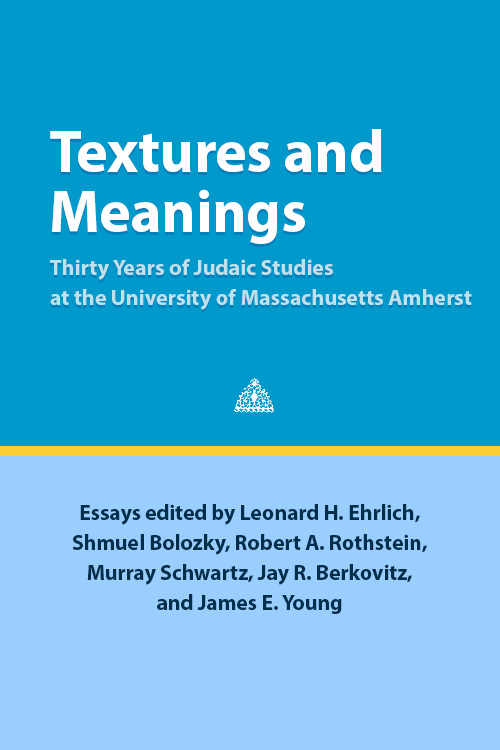Ritual and Modernity: Rethinking Jewish Emancipation
Jay R. Berkovitz
This chapter is part of: Leonard H. Ehrlich et al. 2004. Textures and Meanings: Thirty Years of Judaic Studies at the University of Massachusetts Amherst
Download Chapter| Description |
|---|
| Jay R. Berkovitz draws attention to two important trends that are crucial for enriching our understanding of the modernization process: the significance of new social and religious controls and the changing role of ritual. In part one he demonstrates how “the first stage of modernization was already underway in the century preceding 1789.” Driven by economic transformation, modernism challenged the autonomy of Jewish communities even as it brought new, assimilative opportunities. Traditionally, Sephardim had been inclined to integration and clandestine religious identity, and Ashkenazim to separatism. Berkovitz finds general trends in the particular changes that varied from community to community. Berkovitz also shows that economic, class and gender tensions are reflected in changes in sumptuary law through which Jewish communal leaders attempted to preserve “the hierarchies of social status.” The assertion of internal controls is a measure of the erosion of religious lifestyle. The need for control reflects communal anxiety. The pressure of assimilation is felt, for example, in the anxieties about youthful transgressions of authority and discipline regarding social behavior. Increased cooperation with the gentile world is accompanied by an increased sense of jeopardized autonomy. Communal boundaries are felt to be threatened. The movement toward laicization placed increased focus on the public interest, diminishing the authority of rabbis. In part two Berkovitz emphasizes the new role that religion played in helping Jews interpret the meaning of emancipation. Whereas in rural Alsace ritual remained central to the daily rhythms of life and culture long after the 1789, in the cities ritual came to embody the experience of citizenship, nationalism and religious pluralism. Increasingly, ritual assumed more of a performative function that dramatized the epoch-making events of the nineteenth century. They also reveal how various sectors of the French-Jewish community drew on the texts and paradigms of the Jewish tradition in order to interpret the religious and social implications of civic equality. |
-
Details
Published Published By Aug. 1, 2004 University of Massachusetts Amherst Libraries Citation Berkovitz J. 2004. Ritual and Modernity: Rethinking Jewish Emancipation. In Leonard H. Ehrlich et al. 2004. Textures and Meanings: Thirty Years of Judaic Studies at the University of Massachusetts Amherst
